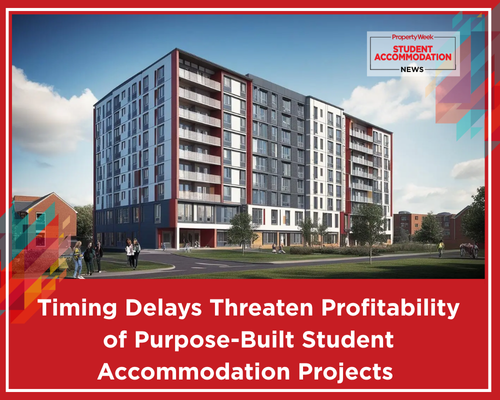
Timing Delays Threaten Profitability of Purpose-Built Student Accommodation Projects
London: The UK’s purpose-built student accommodation market demands precise project timing aligned with academic calendars, as delays risk occupancy and investment returns. Developers and brokers must navigate complex planning, regulatory challenges, and strategic lender partnerships to meet evolving student and investor expectations amid shifting market conditions.
In the fast-paced world of property development, timing can dramatically influence the success or failure of a project. This is especially true for purpose-built student accommodation (PBSA), which must sync precisely with the academic calendar. Missing this critical window not only affects occupancy rates but also the overall profitability of the investment. As interest in PBSA grows among seasoned developers, understanding the intricacies of timing, delivery, and market demands becomes increasingly paramount.
The landscape of higher education in the UK remains robust, with international student enrolment persisting despite a slight decline in overall numbers last year—the first of its kind in a decade. This sustained interest highlights an underlying demand for quality housing solutions, particularly in regions with high academic concentrations. However, the market cannot simply absorb new developments at will; the cyclical nature of student intake presents unique challenges. For developers, timely project delivery is non-negotiable—failure to align with term schedules can jeopardise their entire investment.
As seasoned developers turn their attention to PBSA, the focus shifts from basic offerings to high-quality living environments that generate stable income streams. This shift is underpinned by the growing expectations of both students and investors. According to property specialists, this evolution reflects a desire for assets that not only meet immediate demand but are also positioned for long-term growth.
The challenges of planning and executing PBSA projects cannot be overlooked. Developers must navigate complex requirements that differ from traditional residential developments, such as considerations for density and transport links. A successful project often hinges on collaboration with finance partners who possess a deep understanding of the sector. The planning nuances involve not just meeting regulatory standards, but also anticipating and mitigating risks through strategic funding arrangements. This necessitates a lender who can provide bespoke solutions tailored to the rigorous timelines synonymous with PBSA.
For brokers operating in this sphere, expertise is essential. The interplay of timing and execution demands a nuanced approach to lender selection and project management. Brokers are urged to adopt a discerning attitude, fostering relationships with lenders who demonstrate not only an appetite for PBSA but also the operational savvy to back it up. A delay in financing can be catastrophic; for instance, if a lender becomes entangled in prolonged credit approval processes, it can disrupt the entire build timeline and lead to financial losses.
Looking beyond the initial construction phase, brokers must facilitate a smooth transition to occupancy and long-term financial viability. The intricacies of PBSA require a cohesive strategy that aligns initial development financing with subsequent mortgage options, reducing the friction often associated with switching providers mid-cycle. A unified approach from a lender who understands the entire process can help keep projects on track and ensure that investments yield the desired returns.
The emergence of PBSA has not been without its challenges, particularly in regions where supply has outstripped demand, leading to perceptions of oversaturation. This issue was notably highlighted in urban areas like the Midlands, where strategic site selection is paramount. Locations that are proximal to educational institutions tend to fare better in terms of uptake, suggesting a need for developers to carefully assess the geographical landscape as they plan new projects.
Furthermore, broader planning policies and local interpretations continue to shape the development of PBSA. Comprehensive research has indicated that understanding the local planning environment is critical to fostering positive outcomes for new projects. Developers must stay attuned to these evolving policies to ensure compliance and support successful planning applications.
In sum, the potential for PBSA as a lucrative asset class is promising, yet fraught with complexities that demand an experienced and strategic approach. Developers, brokers, and lenders alike must coordinate efforts to navigate this specialized market effectively. The key to seizing opportunities in PBSA lies not only in recognising the demand but also in delivering projects on time, ensuring that the needs of both students and investors are met in an increasingly competitive landscape.

